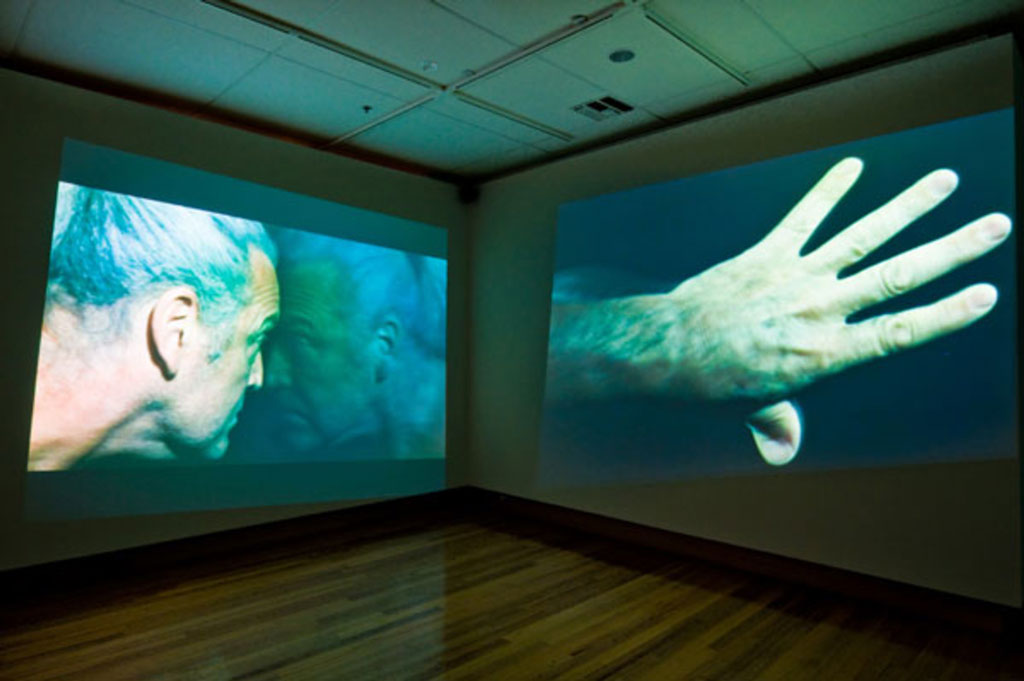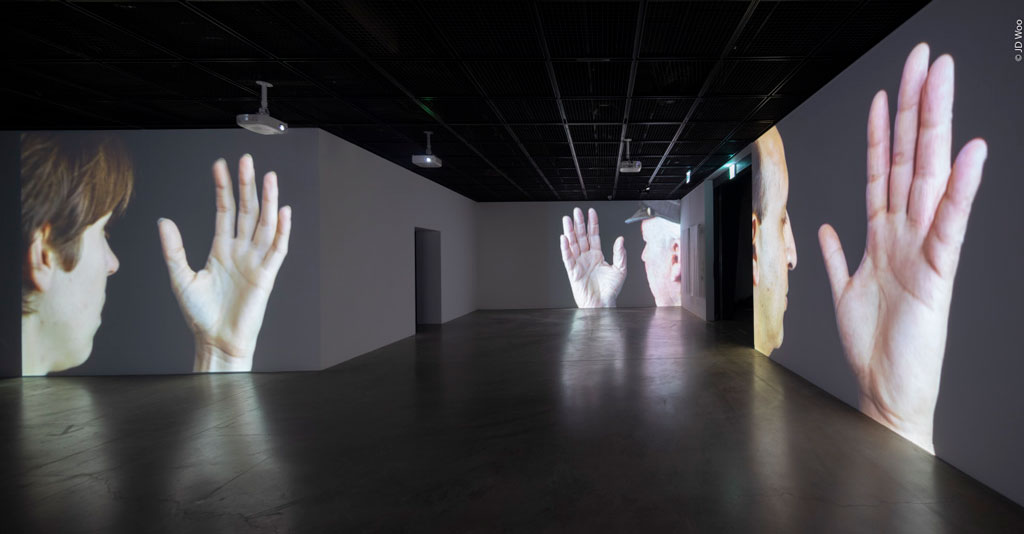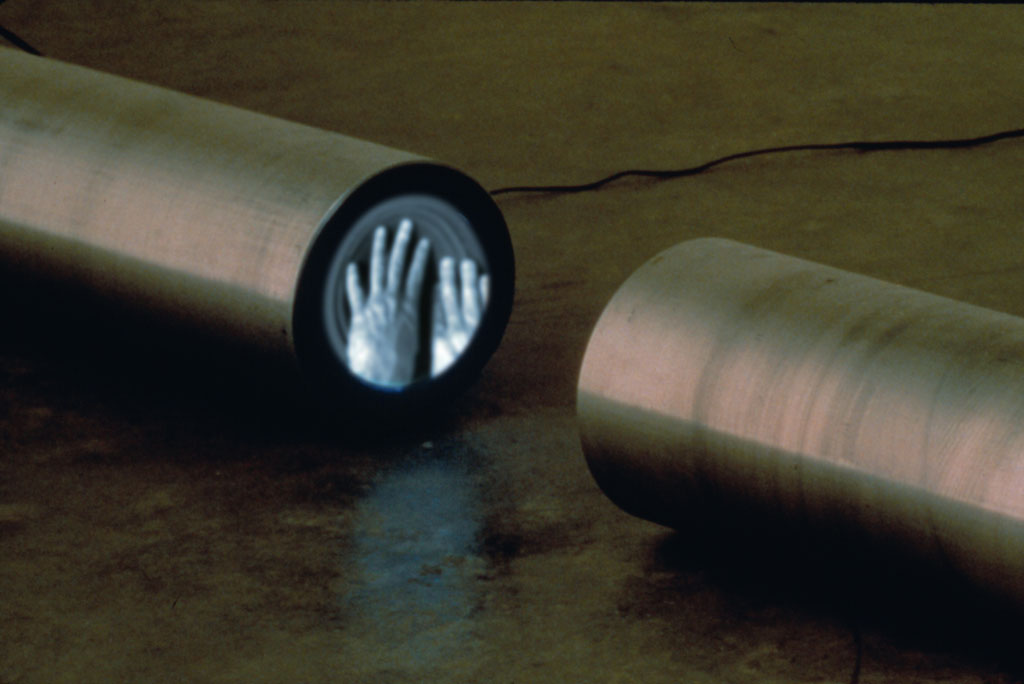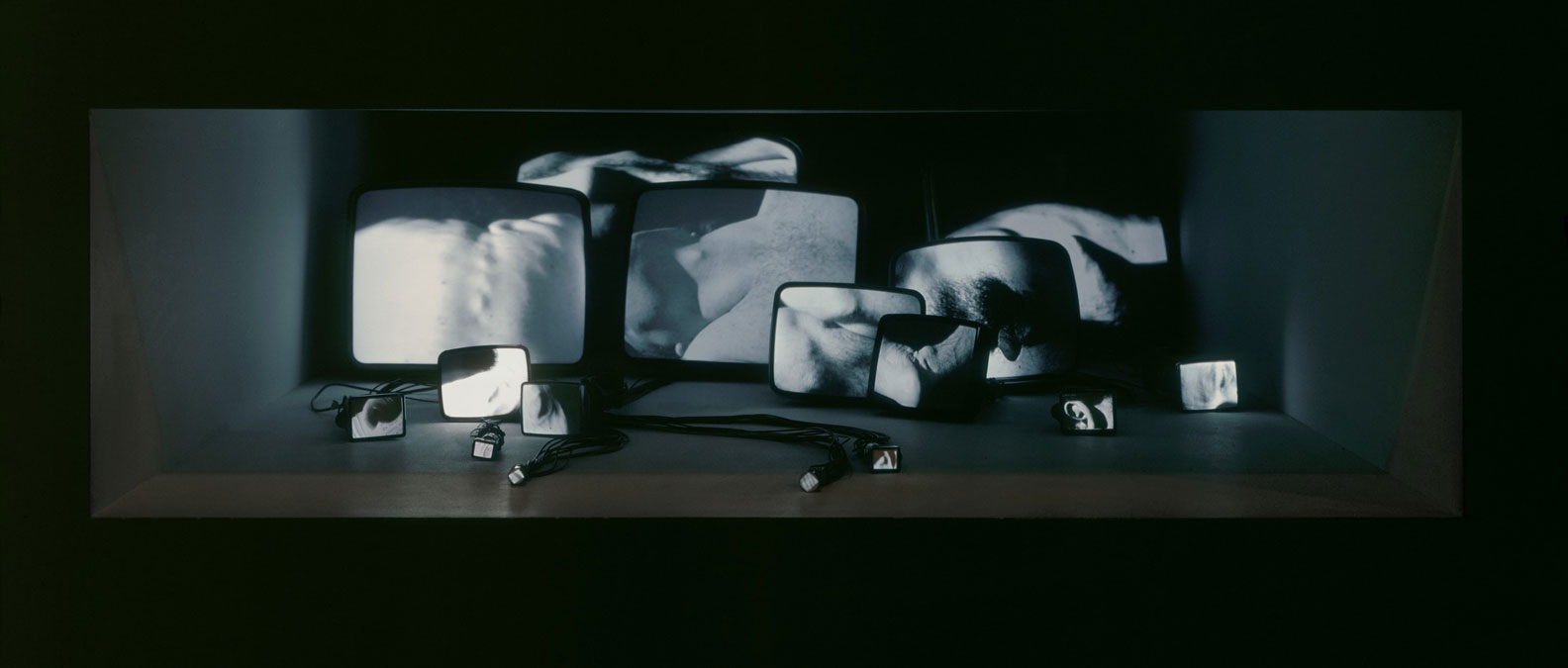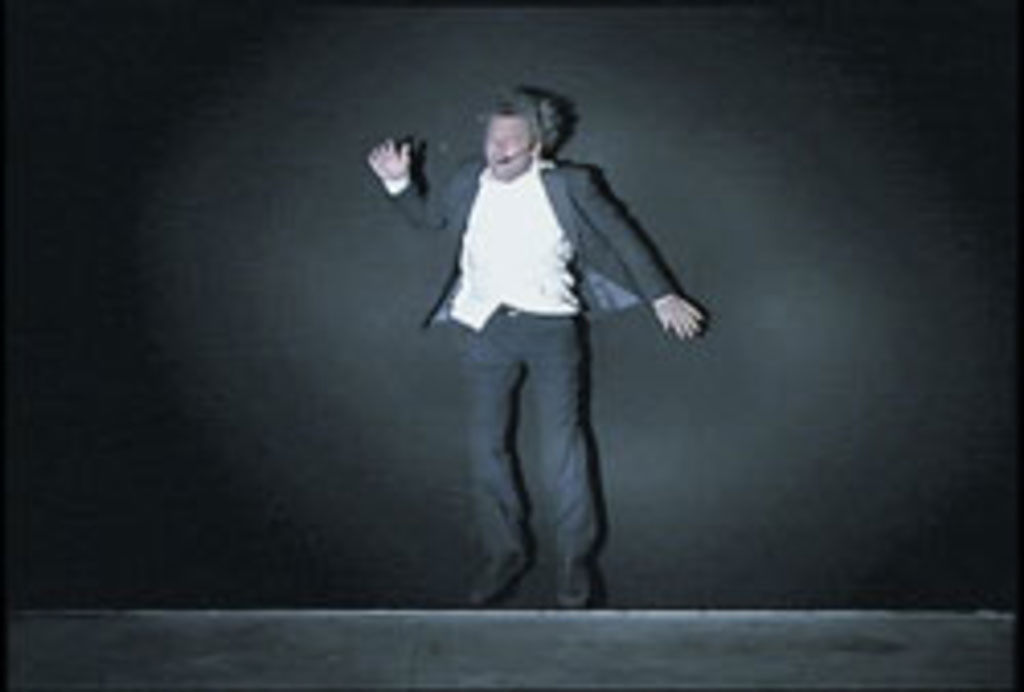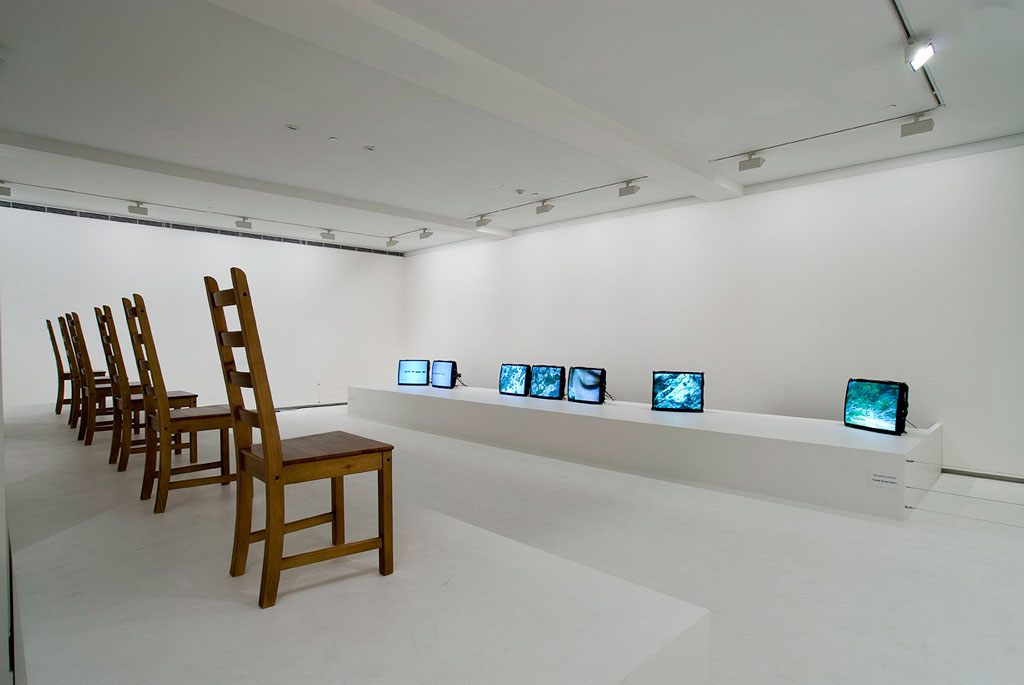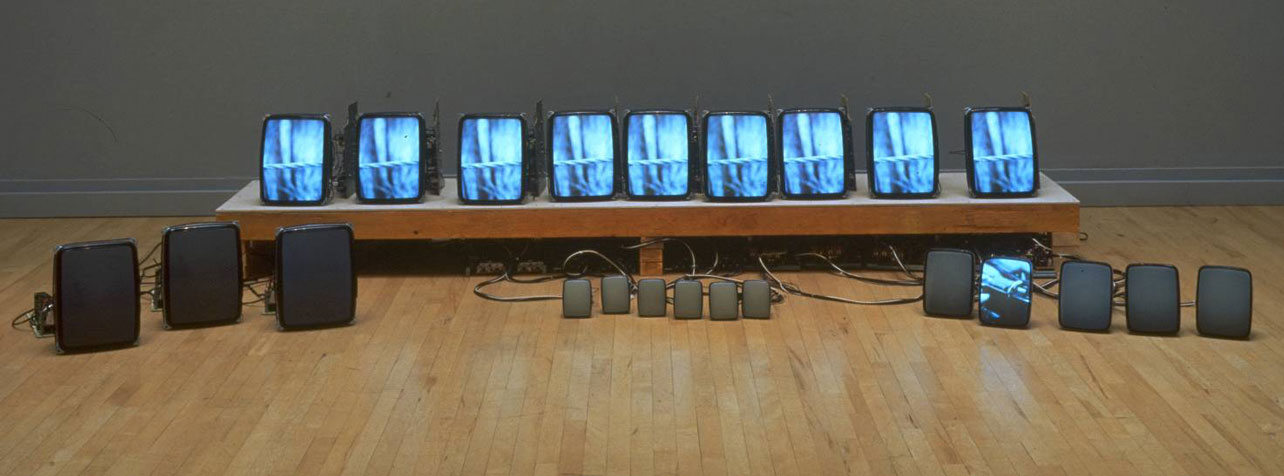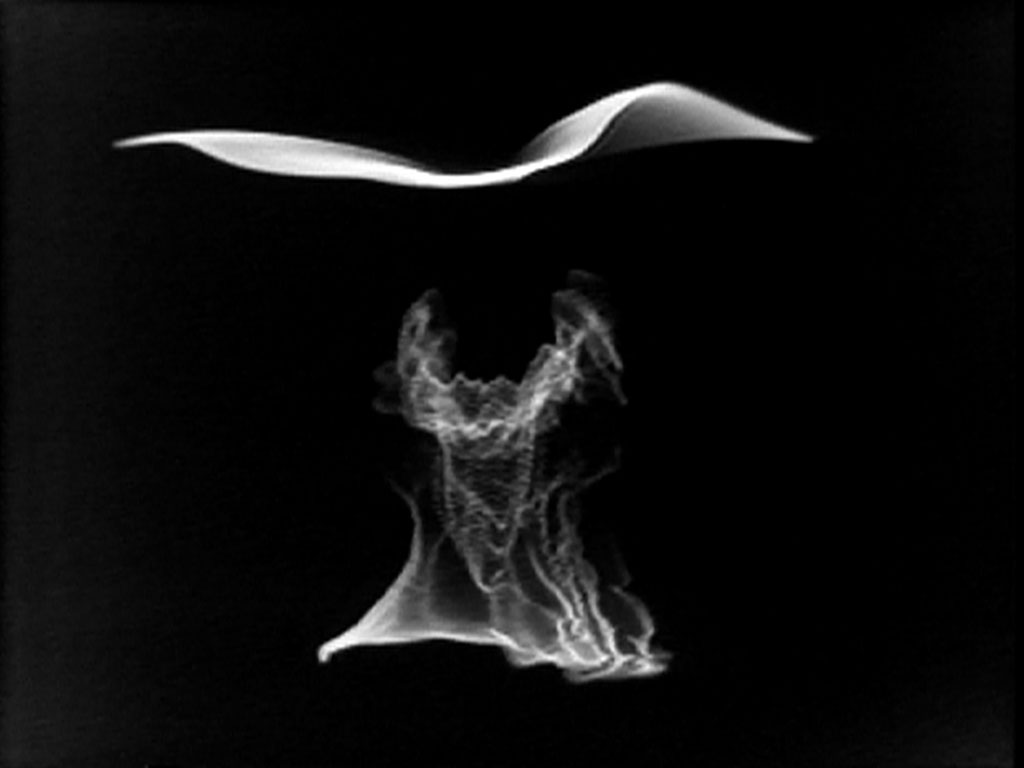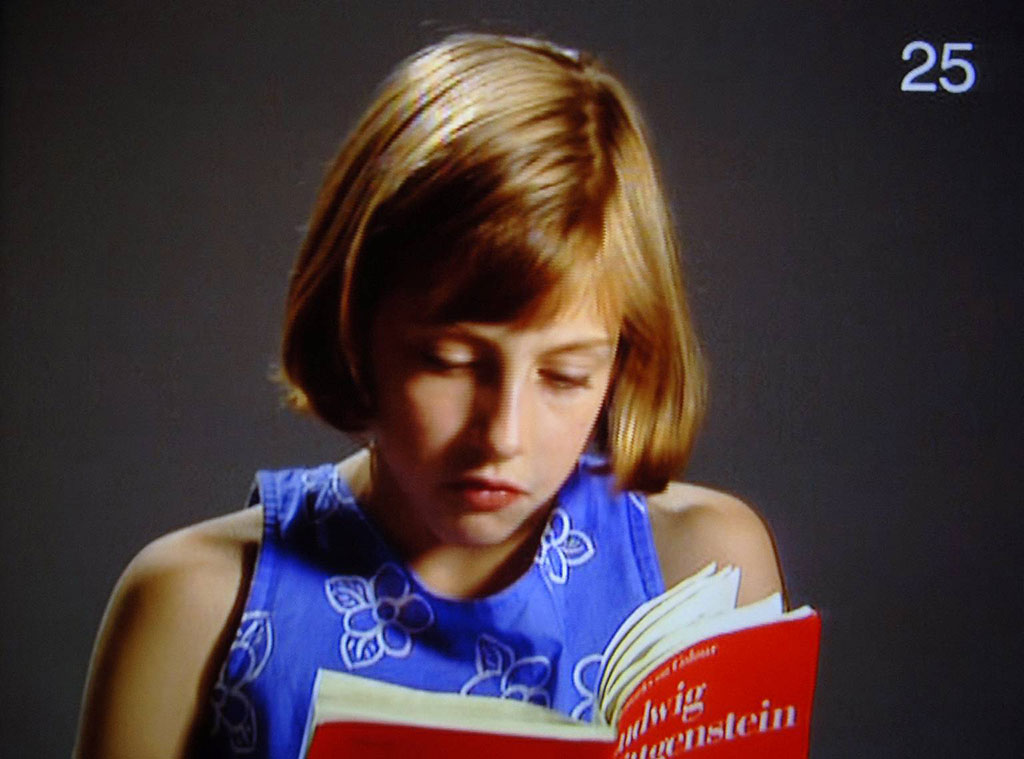TRACES: Gary Hill
 Today is the occasion to bear in mind Gary Hill (4/4/1951- ), a pioneering artist of new media and video work. His video works incorporate commentaries on society and culture as well as bringing in poetic themes and ideas. Hill considers video as a medium to be the most receptive, flexible, and far-reaching mirror of consciousness. He creates psychological spaces within his artworks that allow viewers to see this mirror of their own consciousness.
Today is the occasion to bear in mind Gary Hill (4/4/1951- ), a pioneering artist of new media and video work. His video works incorporate commentaries on society and culture as well as bringing in poetic themes and ideas. Hill considers video as a medium to be the most receptive, flexible, and far-reaching mirror of consciousness. He creates psychological spaces within his artworks that allow viewers to see this mirror of their own consciousness.
By Dimitris Lempesis
 Gary Hill was born in in Santa Monica, California. He studied at the Arts Student League in Woodstock, New York. Originally trained as a sculptor, Gary Hill began working in video in 1973 and has produced a major body of single-channel videotapes and video installations that includes some of the most significant works in the field of video art. His first tapes explored formal properties of the emerging medium, particularly through integral conjunctions of electronic visual and audio elements. Hill’s early formalist works explore the manipulation of electronic color and image density. Of these works, Hill has written that “much of the subject matter and the expressionistic method of working underline and in some sense parody the traditional medium of painting”. In the silent “Mirror Road” (1975-76), Hill creates an increasingly abstracted harmony of landscapes in layered compositions of movement. In “Electronic Linguistics” (1977), small electronic shapes on the screen, moving in a gradually accelerating rhythm, serve as visual interpretations of an electronic sound. In its construction of a language of electronic images and sound, this is a precursor to Hill’s later, more complex investigations. In “Full Circle (formerly Ring Modulation)” (1978), the screen is divided into three sections: a close-up of hands bending a metal rod into a circle; a full-image view of this figure; and an electronically generated circular image, which is created by Hill’s vocalization of an “Ah” sound. The result is a tension between sculpting physical material and “sculpting” with electronics. The aesthetically sophisticated use of modest black-and-white image processing in “Happenstance (part one of many parts)” (1982-83) relates elegant compositions of basic shapes to a dialogue between spoken and written texts that meditates upon the ephemerality of linguistic meaning: “[Words] sit like deer in a field. If I approach them too quickly, they fade into the quick of things.” This exploration would give way to thoroughly unique investigations of linguistics and consciousness, including the empirical inquiries of “Why Do Things Get in a Muddle? (Come on Petunia)” (1984), “URA ARU (the backside exists)” (1985-86) and “Incidence of Catastrophe” (1987-88) — offering resonant articulations of philosophical and poetic insights. With startling precision, “Site/Recite” (1989) moves across and around a table-top graveyard (bones, butterfly wings, egg shells, seed pods, crumpled notes, skulls) in a series of seamless edits that present a continuous flow of detailed close-ups. This taxonomy of dispossession, “little deaths that pile up,” is juxtaposed to a narration on the linkage between semantic self-consciousness and visual experience. Through the window of this text, the objects on the table come to model how consciousness affixes itself to material manifestations and how memory is constituted by the collection of empty vessels. “Site/Recite” is a prologue for “Which Tree” , an interactive videodisc installation that presents viewers with a maze of interconnected branch points, allowing them to wander through its forest of images and words to discover the “texts” of their own thinking patterns. Hill’s works are characterized by their experimental rigor, conceptual precision and imaginative leaps of discovery. Perhaps as much as any artist using image/sound media, Hill’s work in video is about, and is, a new form of writing. It is informed by, and at times can even be seen to vindicate, post-structuralist perspectives about changing relationships between speech, writing and language; Hill “writes” masterfully on Maurice Blanchot in “Incidence of Catastrophe” and Jacques Derrida writes on Hill’s “writing.” But in its correlation to the “French” theoretical discourse, these works are neither theory-driven nor aridly academic. Brilliant videotapes, such as Primarily Speaking and Happenstance dazzle with their perspicacious and illuminating language play; stunning structural achievements such as “Why Do Things Get In A Muddle?” and “URA ARU” awe with their elaborate execution; and “Incidence of Catastrophe”, a work many consider to be Hill’s tour de force, simply overpowers with its intellectual ferocity.
Gary Hill was born in in Santa Monica, California. He studied at the Arts Student League in Woodstock, New York. Originally trained as a sculptor, Gary Hill began working in video in 1973 and has produced a major body of single-channel videotapes and video installations that includes some of the most significant works in the field of video art. His first tapes explored formal properties of the emerging medium, particularly through integral conjunctions of electronic visual and audio elements. Hill’s early formalist works explore the manipulation of electronic color and image density. Of these works, Hill has written that “much of the subject matter and the expressionistic method of working underline and in some sense parody the traditional medium of painting”. In the silent “Mirror Road” (1975-76), Hill creates an increasingly abstracted harmony of landscapes in layered compositions of movement. In “Electronic Linguistics” (1977), small electronic shapes on the screen, moving in a gradually accelerating rhythm, serve as visual interpretations of an electronic sound. In its construction of a language of electronic images and sound, this is a precursor to Hill’s later, more complex investigations. In “Full Circle (formerly Ring Modulation)” (1978), the screen is divided into three sections: a close-up of hands bending a metal rod into a circle; a full-image view of this figure; and an electronically generated circular image, which is created by Hill’s vocalization of an “Ah” sound. The result is a tension between sculpting physical material and “sculpting” with electronics. The aesthetically sophisticated use of modest black-and-white image processing in “Happenstance (part one of many parts)” (1982-83) relates elegant compositions of basic shapes to a dialogue between spoken and written texts that meditates upon the ephemerality of linguistic meaning: “[Words] sit like deer in a field. If I approach them too quickly, they fade into the quick of things.” This exploration would give way to thoroughly unique investigations of linguistics and consciousness, including the empirical inquiries of “Why Do Things Get in a Muddle? (Come on Petunia)” (1984), “URA ARU (the backside exists)” (1985-86) and “Incidence of Catastrophe” (1987-88) — offering resonant articulations of philosophical and poetic insights. With startling precision, “Site/Recite” (1989) moves across and around a table-top graveyard (bones, butterfly wings, egg shells, seed pods, crumpled notes, skulls) in a series of seamless edits that present a continuous flow of detailed close-ups. This taxonomy of dispossession, “little deaths that pile up,” is juxtaposed to a narration on the linkage between semantic self-consciousness and visual experience. Through the window of this text, the objects on the table come to model how consciousness affixes itself to material manifestations and how memory is constituted by the collection of empty vessels. “Site/Recite” is a prologue for “Which Tree” , an interactive videodisc installation that presents viewers with a maze of interconnected branch points, allowing them to wander through its forest of images and words to discover the “texts” of their own thinking patterns. Hill’s works are characterized by their experimental rigor, conceptual precision and imaginative leaps of discovery. Perhaps as much as any artist using image/sound media, Hill’s work in video is about, and is, a new form of writing. It is informed by, and at times can even be seen to vindicate, post-structuralist perspectives about changing relationships between speech, writing and language; Hill “writes” masterfully on Maurice Blanchot in “Incidence of Catastrophe” and Jacques Derrida writes on Hill’s “writing.” But in its correlation to the “French” theoretical discourse, these works are neither theory-driven nor aridly academic. Brilliant videotapes, such as Primarily Speaking and Happenstance dazzle with their perspicacious and illuminating language play; stunning structural achievements such as “Why Do Things Get In A Muddle?” and “URA ARU” awe with their elaborate execution; and “Incidence of Catastrophe”, a work many consider to be Hill’s tour de force, simply overpowers with its intellectual ferocity.